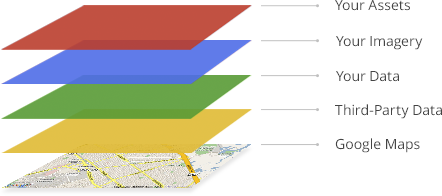API means Application Programming Interface and they are, in essence, a way to communicate with a certain software or service, in order to integrate it into another application. It defines specifications on how software interacts with each other.
APIs are like building blocks for programs.
They range from the most fundamental functions, like interfacing with an operating system in order to use its functions, to enabling the interactive content and seamless integration that the web experience has to offer these days.
APIs can be seen often in everyday life, from the apps on your phone to the sites you visit when browsing, it's hard to find a digital resource that doesn't use an API to integrate some sort of content, often making it easier for the user and creating a better experience overall.
For example, the google maps API can be seen in a lot of apps and sites that include geolocation data. The Waze app can pull google maps data and locations using an API, and lots of Android apps use it to display graphics that otherwise would have taken a lot of time to develop, in these cases, the API just takes the data, does its magic, and delivers displayable results instantly. In one example, the google maps API can be seen like this:
You provide the information, it provides the framework.
Here are some of the most popular APIs and their functions:
- Facebook: social networking, authentication, content sharing.
- Twitter: statistics, feed visualization, content sharing.
- Youtube: video sharing, statistics, advertising.
- Amazon products: advertising.
- Linkedin: business networking.
As you can see, APIs can be very useful and, as a tool for programmers, they are very valuable in order to help them create better applications.
Sources and read more:
http://readwrite.com/2013/09/19/api-defined/http://readwrite.com/2013/09/19/api-defined/
http://www.webopedia.com/TERM/A/API.html
http://www.programmableweb.com/news/most-popular-apis-least-one-will-surprise-you/2014/01/23


No comments:
Post a Comment